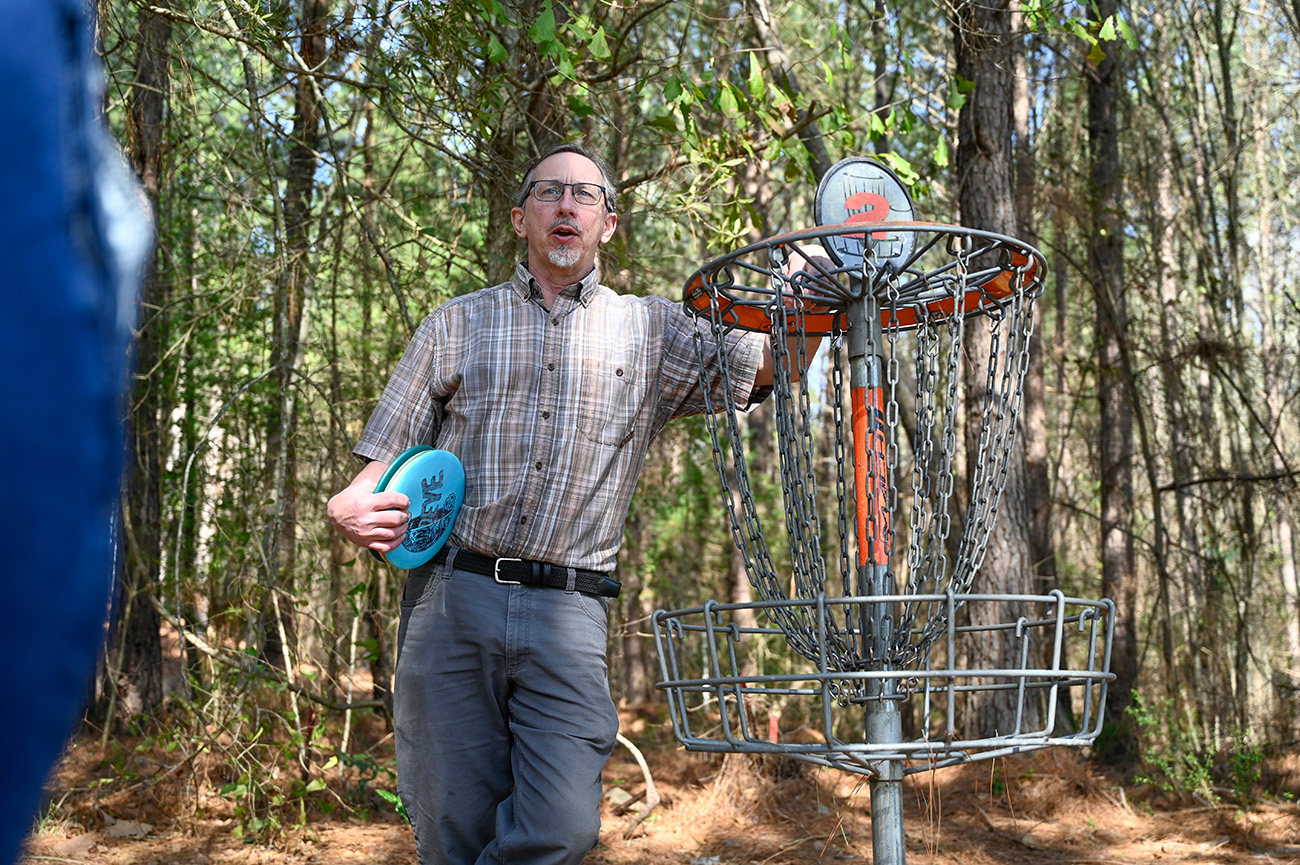Geography professor links physical and cultural worlds–and sports
By recent GCSU alumnus Cale Strickland, '24
W hen Dr. Doug Oetter came to Georgia College & State University to work as a physical geographer and teach geographic methods, the university did not have a dedicated geography department.
That all changed in 2010, when–with just three professors–Georgia College started its geography bachelor’s program.
Oetter’s childhood fascination with maps led him to the discipline.
“When we were on family vacation, even though I was the youngest of four children, they would give me the maps and ask me which way to go ‘cause I could just do it,” Oetter said. “Later on, I discovered that there was an academic field called geography, and it had to do with maps, and I was like, ‘Well, this looks like fun,’ and I fell in love with geography in the first class I took.”
But, he says maps themselves are just the tip of the iceberg.

“Geography is the study of the physical and cultural processes that influence spatial patterns on our planet,” Oetter said. “Every day, human societies are influenced by environmental, economic and historical patterns. The patterns direct our decisions and activities, from what crops we grow for food to how we select a restaurant for dinner. Geography asks where something is and why it is there.”
That “compendium of knowledge” is valuable to a plethora of disciplines and fields, which is why Georgia College began offering two geography-adjacent certificates in addition to its four-year degree: one in geographic information science, or GISc, and one in sustainability.
Geographic information systems combine maps and multiple layers of information, on both regions themselves and the people who inhabit them.
“They’re really more than maps,” Oetter said. “They’re actually spatial databases.”
Sustainability is the process of balancing a company’s economic and environmental responsibilities to create a business that prioritizes the interests of all affected: shareholders, consumers and the earth.
Oetter says the term sustainability–and companies’ interest in it–is relatively new.
“It’s only been around for about 30 years now, and it says that people who practice sustainability will be invested in social ethics, they’ll be knowledgeable of the environment and ecological principles, but at the same time, they will remain true to economic profitability,” Oetter said.
When Oetter was asked to map West Campus’s cross country course, his teaching merged with one of his biggest hobbies and passions: disc golf.
“When I was out there walking around, mapping the course, I realized, ‘This is where we need to put a disc golf course,’” Oetter said.
Four years later, Oetter and his students finished Myrtle Ridge, Georgia College’s own 18-hole course.
Dr. Max Harleman, an assistant professor of public administration at Georgia College, is the faculty advisor for the university’s disc golf club and works with Oetter to maintain Myrtle Ridge.
“There’s a lot of momentum to build a disc golf community here,” Harleman said. “And what Doug and I are trying to do is leverage the momentum we have, given that we have a course here at Georgia College, on West Campus, and also the momentum we have with the disc golf club and league, in order to support that growth of the disc golf community.”
On first thought, the connection between geography, sustainability and disc golf may not be obvious, but Oetter says all three involve the same process: analyzing information to create continual efficiency.
“That’s what geography really is: how we come up with consistent, predictable and desirable choices about management of our surface area,” Oetter said.
See this story come alive in the spring 2024 edition of the A&S Newsletter.
